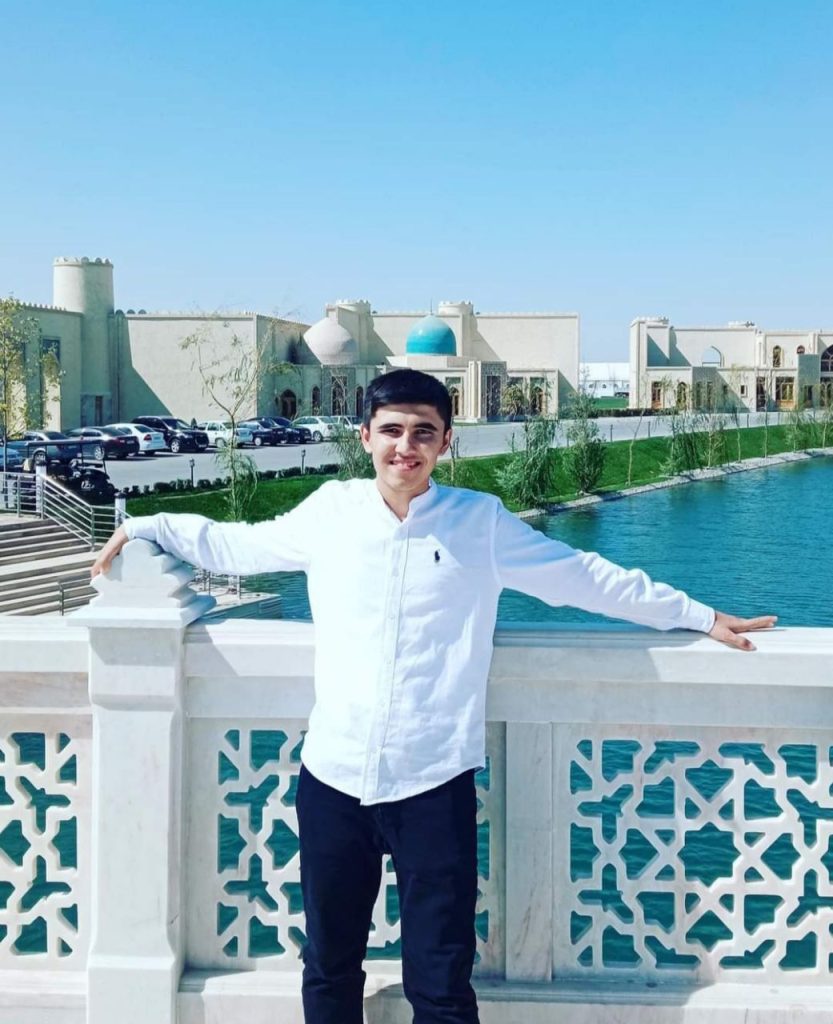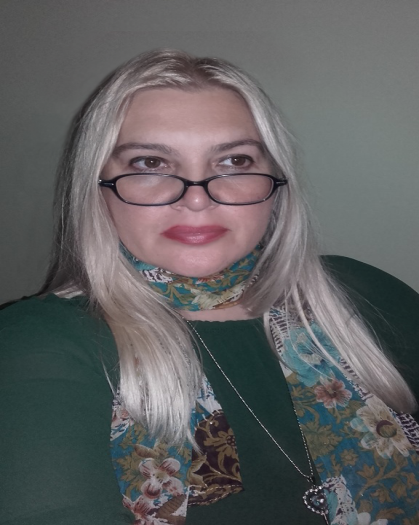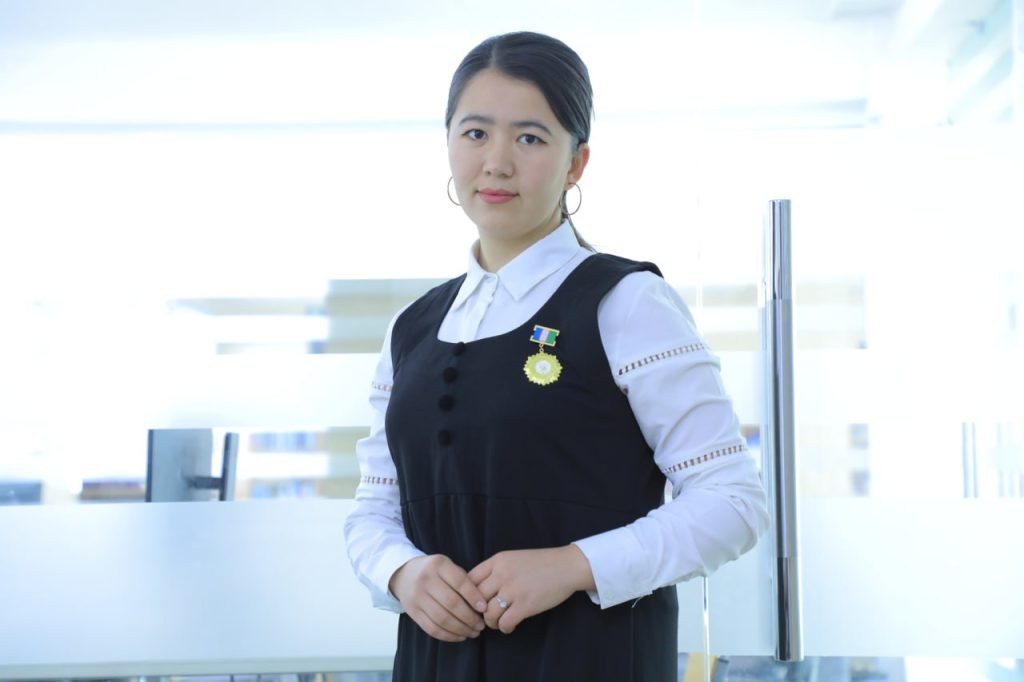
SPEECH SOUNDS IN GERMAN LANGUAGE
X.U.Urokov1 1Samarkand state institute of foreign languages department of Uzbek language and literature trainee teacher Sharipov Ubaydullo2
2Samarkand state institute of foreign languages faculty of Foreign language and literature 2nd year student https://doi.org/10.5281/zenodo.7509763
Annotation The article introduces the study of speech sounds, different kind of divisions and changes, features of vowels and consonants, Law of Grimm and Verner and important information related to speech sounds.
Keywords: phonetics , articulation , vowels , consonants , Proto-Germanic , Proto-Indo-European , monophthong , phoneme.
Children communicate with sounds from birth. Their “speech” begins with early, involuntary sounds, and develops into sophisticated sequences of movements – using the lips, tongue, and producing all of the sounds in words and sentences. Speech sounds is a powerful tool for communication. The use of speech sounds is important for early word learning and successful nonverbal and verbal communication with people all over the world.
The study of speech sounds (or spoken language) is the branch of linguistics known as phonetics. So, phonetics is the study of the way humans make, transmit, and receive speech sounds. The speech sounds are phonetic variants of the phonemes. For example, the German phoneme [K] occurs in its positionally conditioned variants in the following words: klein, Sack, Kunde, Ecke, Musik, Kiefer. As unit of phonetics , speech sounds have four aspects: articulatory, acoustic, auditory, and functional (social).
According to V.A. Vassilyev, these four aspects cannot be separated from one another in the actual process of communication, but each of these four aspects can be singled out for purposes of linguistic analysis and thus becomes a separate object of investigation, which necessitates the division of phonetics as a science into several branches. Each of these branches of phonetics has its own methods of investigation and its own terminology. Phoneticians (linguists who study the articulatory and/or acoustic properties of speech sounds) have grouped the speech sounds into several categories. There are vowels and consonants, of course, but there are also lots of smaller distinctions within those categories.
ACADEMIC RESEARCH IN MODERN SCIENCE
International scientific-online conference 43 When it comes to vowels, vowels don’t involve stopping the stream of air as it travels up from the lungs, but they do involve changing the shape and size of the space through which the air passes. The vocal cords must also be vibrating in order for a vowel sound to be produced. The German alphabet has five main vowels: a, e, i, o, u. In addition, there are so called “umlaute”: ä, ö, and ü.
Also, these vowels can be paired to form different sounds—just like in English: “boat” makes a different sound than “boot.” German vowels are classified according to the following six characteristics: according to articulation stability, duration, quality, lip position, tongue position (in the horizontal direction) and degree of elevation of the tongue (in the vertical direction).
1) Stability of articulation specifies the actual position of the articulating organ in the process of the articulation of a vowel. So according to this principle the English vowels are subdivided into: monophthongs and diphthongs. Monophthongs are vowels with stable articulation. The diphthongs are vowels with sliding articulation. there are 15 monophthongs in German: [aː], [a], [ɔ], [oː], [uː], [ʊ], [i:], [ɪ], [y:], [y], [e:], [ɛː], [ɛ], [øː], [œ] and 3 diphthongs :[aɛ], [ao] and [ɔø].
2) The German monophthongs are traditionally divided into two varieties according to their length. Monophtongs break down into 8 long vowels and 7 short ones. Long vowels: a/ä, e, o/ö and u/ü are pronounced as long vowels if they are followed by h or ß, or a single b, k, d, f, n, m, p, s, t or z. We pronounce i as a long vowel if it is followed by e. beten – to pray Sahne – cream Söhne – sons Fuß – foot Miete – rent Short vowels: a/ä, e, i, o/ö and u/ü are pronounced as short vowels if they are followed by ck, ch, tz or a double consonant. Rock – skirt Lachen – to laugh Mütze – cap ACADEMIC RESEARCH IN MODERN SCIENCE International scientific-online conference 44 Männer – men Mitte – middle
3) In German, quantity is associated with quality. Long vowels are closed and short ones are open. Two vowels [ a: ] and [ ɛ: ] are long and open.
4) According to the position of the lips , vowels are rounded and unrounded. Rounded vowels are those in the production of which the lips are more or less rounded and protruded. Unrounded vowels are those in the production of which the lips are spread and neutral. Rounded vowels are: [ o: ], [ɔ ] , [ u: ], [ ʊ ], [ y: ], [ y ], [ øː ], [ œ ]. Unrounded vowels are: [ a: ], [ a ], [ i: ], [ ɪ ], [ e: ], [ ɛː ], [ ɛ ].
5) According to the position of the tongue, German vowels are classified into front row vowels : [ i: ], [ ɪ ], [ y ], [ e: ], [ y ], [ e: ],[ ɛː ], [ ɛ ], [ øː ], [œ ], [ a ] ,which are pronounced with the tongue pushed forward and back row vowels : [ u: ], [ ʊ ], [ o: ], [ ɔ ], [ a: ], which are pronounced with the back tongue pushed backwards.
6) Depending on the degree of tongue elevation, a distinction is made between low [ a; ], [ a ], medium [ e: ], [ɛː ], [ ɛ ], [ øː ], [ œ ], [ o: ], [ ɔ ] and high tongue elevation vowels [ i: ], [ ɪ ], [ y:], [ y ], [ u: ] , [ ʊ ]. The vowel system of the ancient Germanic languages consisted of short and long vowels.
Differentiation of short and long vowels is one of the important features of the German language group. Short and long vowels changed differently, long vowels became closer to diphthongs, while short vowels changed to open vowels. A diphthong is a combination of two adjacent vowel sounds within the same syllable. Additionally, Ancient Indo-European [o ] sound Front Central Back Unrounded rounded short long short long short long short long Close iː yː uː Closemid ɪ eː ʏ øː (ə) ʊ oː Openmid ɛ (ɛː) Œ (ɐ) ɔ Open A aː
ACADEMIC RESEARCH IN MODERN SCIENCE
International scientific-online conference 45 changed to open [a] in Germanic languages, long vowel [a:] changed to [o:] in Ancient Indo-European languages. The vowel system in ancient Germanic languages is composed of short and long vowel sounds. The distinction between short and long vowels is one of the important characteristics of the Germanic group of languages. short and vowels vowels changed differently, while long vowels approached diphthongs, while short vowels switched to open vowels.
The sound of ancient Indian-European [o] changed to open [a] in Germanic languages, and the long vowel [A:] in ancient Indo-European languages changed to [o:]. Independent vowel changes
Change s Illustra ted Examples PI E P G Non-germanic Germanic Old Modern o a : A o: L noch , Ir nochd , R ночь Gt nahts , O Icel natt, OHG naht Sw natt , G Nacht R могу ; мочь Gt magan, OE maßan, mæß Sw mä , NE may L mater , R мать Icel moðir , OE mödor Sw moder , NE mother O Ind bhrata , L frater , R брат Gt brop̈ar, O Icel Broðir, OE broðor Sw broder , NE brother Mutation of vowels Change Illustrated Examples NonGermanic Germanic Old Modern
ACADEMIC RESEARCH IN MODERN SCIENCE
International scientific-online conference 46 PIE – Proto-Indo-European O Icel – Old Icelandic PG – Proto-Germanic Sw – Swedish L – Latin R – Russian Gt – Gothic OE – Old English O – object NE – New English OHG – Old high german After these changes , the vowel system contained the following sounds: It is believed that in addition to these monophongs Proto Germanic had a set of dipthongs made up of more open nuclei and closer glides : [ ei ] , [ ai ] , [ eu ] , [ au ] and also [ iu ] ; nowadays , however, many scholars interpret them as sequences of two independent monopthongs .
A monophthong is a pure vowel sound, one whose articulation at both beginning and end is relatively fixed, and which does not glide up or down towards a new position of articulation. The history of the Germanic group begins with the appearance of what is known as the Proto-Germanic (PG) language. Proto-Germanic is the reconstructed proto-language of the Germanic branch of the Indo-European PIE G i e e u u o L ventus , R ветер Gt winds , O Icel , Vindr , OE wind Sw wind , NE wind L edit , R есть L edere , L есть OHG iz̪it , OE itep , O Icel eta , OE etan G ißt , NE eats , G essen NE eat Lith sunus , R сын Icel sunr , OE sunu Sw son, NE son Celt hurnan O Icel , OE horn NE horn , Sw horn Short vowels I E A O u Long vowels i: e: a: o: u:
ACADEMIC RESEARCH IN MODERN SCIENCE
International scientific-online conference 47 languages. It is supposed to have split from related Indo-European tongues sometime between the 15th and 10th с B.C. The would-be Germanic tribes belonged to the western division of the Indo-European speech community. Proto-Germanic eventually developed from pre-Proto-Germanic into three Germanic branches during the fifth century BC to fifth century AD: West Germanic, East Germanic and North Germanic, which however remained in contact over a considerable time, especially the Ingvaeonic languages (including English), which arose from West Germanic dialects and remained in continued contact with North Germanic.
The end of the Common Germanic period is reached with the beginning of the Migration Period in the fourth century. Vowels underwent different kind of alternations: qualitative and quantitative , dependent and independent. Qualitative changes affect the quality of the sound , e.g.: [ o >a ] or [ p > f ]; quantitative changes make long sounds short or short sounds long , e.g. : [ i > i: ] , [ ll > l ] ; dependent changes ( also positional or combinative ) are restricted to certain positions or phonetic conditions , for instance, a sound or in a certain type of a syllable; independent changes – also spontaneous or regular – take place irrespective of phonetic conditions , i.e. they affect a certain sound in all positions.
In the later Proto Germanic and in separate Germanic languages the vowels displayed a tendency to positional assimilative changes: the pronunciation of a vowel was modified under the influence of the following or preceding consonant; sometimes a vowel was approximated more closely to the following vowel. The resulting sounds were phonetically conditioned allophones which could eventually coincide with another phoneme or develop into a new phoneme. Moreover, a phoneme is a unit of sound that can distinguish one word from another in a particular language.
The earliest instances of progressive assimilation were common Germanic mutations; they occurred in Late Proto Germanic before its disintegration or a short time after. In certain phonetic conditions, namely before the nasal [n] and before [i] or [j] in the next syllable the short [e] , [i] and [u] remained or became close ( i.e . appeared as [i] and [u] ) , whil in the absence of these conditions the more open allophones were used: [e] and [o] , respectively .
Lately , these phonetic conditions became irrelevant and allophones were phonologized. In contrast, a consonant is basically any sound that isn’t a vowel. This is a speech sound that is articulated with complete or partial closure of the vocal tract. The German consonants can be classified according to the following four
ACADEMIC RESEARCH IN MODERN SCIENCE
International scientific-online conference 48 characteristics: 1) according to the involvement of the vocal cords; 2) according to the type of articulation; 3) according to the place of articulation and 4) according to the involvement of the nasal cavity. 1) According to the work of the vocal cords and the force of exhalation consonants are subdivided into voiced and voiceless. Voiced consonants arise when the vocal cords produce a voice tone that combines with a noise.
Voiced consonants are [b], [d], [g], [v], [z], [ʒ], [j], [m], [n], [I], [r], [R] , [ŋ]. Among them, other consonants (sonants) are to be distinguished. With the sonorant [m], [n], [ŋ], [I], [r], [R], the voice tone dominates over the noise. Voiceless noise sounds are [p], [t], [k], [f], [s], [ ʃ ], [x], [ꞔ ], [h], [pf ], [ts], [tʃ]. These are pure noises. 2) According to the manner of articulation, the consonants are divided into six groups; a) Explosive sounds: [p], [t], [ k], [b], [d], [g]. Between the articulating organ and the place of articulation a seal is formed which is blown open by the air flow. b)Engeries (fricatives): [f], [s], [x], [ʃ], [ꞔ ], [h], [v], [z], [ʒ],[j]. A narrowness between the articulating organ and the point of articulation opposes the air flow as an obstacle. c) Clasped (affricates): [pf], [ts], [tʃ].
Occlusive-constrictive consonants or affricates are noise consonant sounds produced with a complete obstruction which is slowly released and the air escapes from the mouth with some friction. d) Shutter opening sounds (nasals): [m], [n], [ŋ]. At one point in the speech apparatus a blockage is created, but at another point an opening through which the air escapes. e) Laterals: [I]. A lateral is a consonant in which the airstream proceeds along one or both of the sides of the tongue, but it is blocked by the tongue from going through the middle of the mouth. f) Trembling sounds (vibrants) : [ r ], [R]. An articulating organ approaches the point of articulation and is set vibrating.
3) According to the place of articulation, the German consonants are classified into: 1. Lip sounds (labials): [p], [b], [m], [f], [v], [pf]. The lip sounds break down into: ACADEMIC RESEARCH IN MODERN SCIENCE International scientific-online conference 49 a) two lip sounds (bilabials): [p], [b], [m] b) tooth lip sound (dentilabial): [f], [v], [pf]. 2. Tongue sounds (lingual): [t], [d], [n], [I], [r], [s], [ʃ], [ʒ], [ts], [tʃ],[ꞔ ], [j], [k], [g], [ŋ]; where the following subgroups are to be distinguished: a) Front tongue sounds (Linguodentale): [s], [z], [ts]; linguoalveolar: [t], [d], [n], [I], [r]; postalveolar: [ ŋ], [ ʒ], [ tʃ ] b) middle tongue sounds (linguopalatale): [ꞔ ], [j]; c) back tongue sounds (linguovelare): [k], [g], [ŋ]; 3. Back palatine sounds (uvulars): [x], [R];
4. Throat sound (laryngeal consonant): [h]. Place of articulation Force of Articulation forelingual labio- glottal dental interdental alveolar palatoalveolar Strong (fortis) voiceless f θ s ʃ h Weak (lenis) sometimes voiced V ð z ʒ – 4) According to the involvement of the nasal cavity, the consonants are divided into pure and nasal. Pure consonants arise when the soft palate is raised and closes off the nasal cavity from the oral cavity. The airflow can only escape through the oral cavity. The soft palate is lowered when the nasal sounds are articulated. The airflow passes through the nasal cavity. In German there are three nasal consonants [m], [n] and [ŋ].
All other consonants are pure (oral). German consonants can be represented in the following tables:
ACADEMIC RESEARCH IN MODERN SCIENCE
International scientific-online conference 50 Place of articulatio n Type of articulation Lip sounds Tongue sounds Back palatin e sounds Throa t sound Two lip sound s tooth lip soun d Front tongue sound s middle tongue sound s back tongue sound s explosive sounds P b t d t d k g Engeries F v s z ʃ ʒ ꞔ x R h clasped (affricates) Pf ts tʃ shutter opening sounds Nasals M n ŋ Laterals l trembling sounds (vibrants) r R The first fundamental change in the consonant system of Germanic languages dates back to times far removed from today.
Jakob Ludwig Grimm (1785-1863), a German philologist and a folklorist (generally known together with his brother Wilhelm for their Grimm’s Fairy Tales (1812-22) studied and systematized these correlations in his Deutsche Grammatik (1819-37). His conclusions are formulated Grimm’s law (the First Consonant shift). The essence of Grimm’s law is that the quality of some sounds (namely plosives) changed in all Germanic languages while the place of their formation remained unchanged. Thus, voiced aspirated plosives (stops) lost their aspiration and changed into pure voiced plosives, voiced plosives became voiceless plosives and voiceless plosives turned into voiceless fricatives.
ACADEMIC RESEARCH IN MODERN SCIENCE
International scientific-online conference 51 The first law of displacement of consonants, which was called “Act” by Grimm, consisted of three stages. 1. The resonant explosive in Indo-European languages (b, d, g) corresponded to the non-resonant explosive (p, t, k) in Germanic languages. 2. The non-resonant explosive (p, t, k) in Indo-European languages was suitable for the non-resonant sliding (f , th, h) in Germanic languages. 3. The resonant explosive sound of breath (bh, dh, gh) in Indo-European languages was consistent with the resonant explosive (b, d, g) in Germanic languages.
Examples of consonant shifts Shift in Germanic Sanskrit Greek Latin English PIE PG P > f t > θ k > x päd tanu ꞔ atam pod tanaos hekaton ped tenius centum foot thin hundred b > p d > t g > k – daꞔ a ajras – deka agros lübricus decem ager slippery ten acre bh > b dh > d gh > g bhrätä vidhavä hansas Phrätёr ёitheos khёn fräter vidua (h)änser brother widow goose Another important series of consonant changes in Proto Germanic was discovered in the late 19 th century by a Danish scholar, Carl Verner. They are known as Verner’s Law (Second Germanic consonant shift).
Verner’s Law explains some correspondences of consonants which seemed to contradict Grimm’s Law and were for a long time regarded as exceptions. Verner’s law describes a historical sound change in the Proto-Germanic language whereby consonants that would usually have been the voiceless fricatives[ f], [þ], [s], [h], [hʷ], following an unstressed syllable, became the voiced fricatives [β],[ ð],[ z],[ ɣ],[ ɣʷ]. The law was formulated by Karl Verner, and first published in 1877.
Verner’s law explains why some verbs in Old English changed their root consonant in the past tense and in the Participle II – originally, these grammatical forms had the stress on the second syllable. Hence the basic forms of such verbs as snidan (cut) and weordan ( become) were sni dan — sndd – snidon – sniden; weordan – weard – wurdon – worden. According to Verner’s
ACADEMIC RESEARCH IN MODERN SCIENCE
International scientific-online conference 52 Law, all the early Proto Germanic voiceless fricatives [ f, θ, x] which arose under Grimm’s Law and also [s] inherited from Proto-Indian-European, became voiced between vowel if the preceding vowel was unstressed; in the absence of these conditions they remained voiceless. The voicing occurred in early Proto Germanic at the time when the stress was not yet fixed on the root-morpheme.
The process of voicing can be shown as a step in a succession of consonant changes in prehistorical reconstructed forms ; consider , e.g. the changes of the second consonant in the word “father” Proto-IndianEuropean Early Proto-Germanic Late ProtoGermanic Pa’ter > fa’ θar > fa’ ðar > >‘faðar Carl Verner made the following additions to the first law of consonant shift: transition of t to < [th], it also transitioned to [t] in Old English. Latin Old English Frater Brothor Mater Mothor Verner clarified that if the vowel in the syllable is stressed, the voiceless sliding [f], [θ], [x], [s] changed to > [v], [θ], [u], [z] based on the law of consonant shift in the first act.
Finally, speech sounds are a language universal that plays a huge role in communication. It is characterized by different parameters and has a number of functions. One of the many features of speech sounds are highlighted is that it helps individuals learn. Other than that, individuals who learn in their native language learn better because of the ease of understanding and less language barrier. Therefore, the importance of sound of speech is undeniable.
List of used literatures: 1. Теоретическая фонетика английского языка, учебно-практическое пособие, Челябинск, 2016. 2. Z.B.Toshev. Nemis tili fonetikasi. Toshkent, “Fan”, 2009. 3. К.Н.Намозов, Н.Г.Содиқова. Немис тили амалий фонетикаси, Самарқанд, 2009. 4. Z. X. Masodiqova, Sh. S. Hatamqulova. Nemis va o‘zbek tillarida unli va ayrim undosh tovush haqida. Молодой ученый. 2017.






